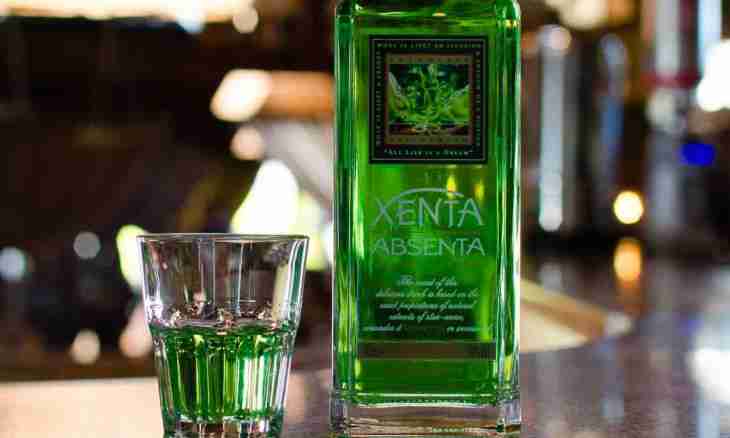Absinthe represents tincture from mix of herbs on alcohol. Around it there is a huge number of legends and delusions because of which this drink in many countries appeared under a ban almost for 100 years.
Absinthe may contain from 55 to 85% of alcohol, it possesses very characteristic bitter taste. The main component of this drink is extract of a bitter wormwood which impacts to drink a peculiar, recognizable bitter taste and a sharp aroma.
Origin of absinthe
Absinthe is obliged by the known hallucinogenic effect a tuyona, this substance which in large numbers contains in essential oils of a wormwood. Except this plant the melissa, an acorus, mint, fennel, mint can be beverage composition, besides the real absinthe surely has to contain an anise.
Most likely, the name of drink came from the Ancient Greek word apsinthion which means "non-drinkable". In Ancient Greece the tincture similar on the properties to absinthe, was used for birth stimulation. Hippocrates by means of this drink treated menstrual pains, rheumatism, anemia and jaundice. In Ancient Greece during the Olympic Games the champion of races on chariots had to drink surely an absinthe cup to remember that the glory and a victory have a bitterness. In modern more habitual understanding absinthe was invented approximately in 1790 in the small village Kuve which is located in the west of Switzerland. Certain madam Ernye cooked remarkable wormwood tincture which the local doctor prescribed the patients as universal remedy. Tincture improved appetite, stimulated digestion and gave the toning effect.
Popularity and bans
Absinthe received special popularity in the middle of the 19th century while France actively waged colonial wars in Africa. Absinthe was given to soldiers for prevention of malaria and dysentery and also as means for water purification from bacteria. Absinthe proved to be very adequately and became an integral part of soldier's life. From this point among inhabitants of the French colonies the fashion for this drink began to extend quickly. In the middle of the 19th century it was noticed that systematic consumption of absinthe leads to accustoming, the increased nervous excitability and other unpleasant consequences. The real fight against this drink ran high at the beginning of the 20th century, at this time absinthe was forbidden in Italy and Belgium, a bit later a ban was imposed also in France, and behind it and in other countries of Europe. In the present days in the USA the impact of a wormwood on brain functions of the person is equated to effect of marijuana, as a result all products containing a wormwood have to be cleaned from a tuyon without fail. The Swiss parliament and the Dutch court legalized absinthe only in 2004, however at the moment production of this drink is strictly limited to standards which were introduced by the European Union. According to these norms, the quantity of a toxic tuyon can't exceed 10mg/kg.

